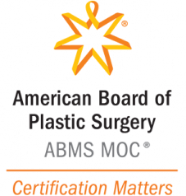Mountain West Plastic Surgery
60 Four Mile Drive, Suite 11
Kalispell, MT 59901
Phone: (406) 609-0210
Fax: (406) 609-0211
Monday–Friday: 8 a.m.–5 p.m.
Breast Reduction
Overly large breasts can cause physical discomfort, problems with clothing fit, and self-consciousness. Breast reduction surgery in Kalispell performed by Dr. Michelle Spring or Dr. Michael Hromadka can improve the quality of your life by relieving shoulder, neck, or back pain and enabling you to get more enjoyment out of life. Women travel to see our board-certified plastic surgeons from Whitefish and Great Falls, MT; Coeur d’Alene and Sandpoint, ID; and throughout the Northwest for this life-changing procedure.
Breast Reduction
Before & After Photos
WARNING:
This feature contains nudity. Please click OK to confirm you are at least 18 years of age and are not offended by such material.
What Happens During a Breast Reduction?
Breast reduction surgery is like a breast lift because, in addition to removing excess fat and breast tissue, the surgeon excises stretched skin and elevates the breasts. The most common breast reduction technique involves making incisions in an inverted T or anchor pattern. The surgeon makes an incision around the areola, which then extends down to the base of the breast. A horizontal incision is then made along the breast’s natural crease.
After removing excess breast tissue, fat, and skin, your surgeon repositions the nipple and areola so the results look natural and aesthetically pleasing. In some cases, the surgeon uses liposuction to remove fat from the area around the armpit. A patient’s nipples typically remain attached to blood vessels and nerves to preserve sensation. For women with very large or pendulous breasts, however, the surgeon may need to remove the nipple and areola and then graft it in a higher position. Your surgeon completes the procedure by suturing the incisions.
Who Can Benefit From Breast Reduction Surgery?
Women who undergo breast reduction surgery are among the most highly satisfied plastic surgery patients because it can be a life-changing procedure. Good candidates for breast reduction surgery may:
- Experience physical discomfort in their necks, shoulders, or back
- Be limited in the types of activities in which they can participate
- Feel self-conscious about the size of their breasts
- Have trouble finding clothing or bras that fit
Even though breast reduction surgery can be performed for adolescents, the breasts should be fully developed unless the overly large breasts are causing significant discomfort. It’s important that younger patients are mature enough emotionally to understand what the procedure involves and have realistic expectations about the results.
Is Breast Reduction Covered by Insurance?
Breast reduction may be covered by your health insurance carrier if it’s considered “medically necessary.” This typically requires documented chronic physical health issues. Even though the specific criteria to be eligible for coverage varies depending on the insurance company, breast reduction is often covered if the size of your breasts cause:
- Severe rashes or skin infections that are hard to treat
- Limited activities
- Compressed nerves
- Chronic upper back, neck, or should pain
- Grooves in your skin from bra straps
- Poor posture or spinal misalignment
Many insurance carriers cover breast reduction surgery based on the amount of breast tissue that the surgeon removes to alleviate your health issues. It’s important to have your insurance company approve coverage for the procedure before your surgery.
How Long Is Breast Reduction Recovery?
The recovery time you need after breast reduction surgery depends on how quickly your body usually heals, the extent of the procedure, and other factors. You may feel some pain for the first couple of days—especially when you move around or cough—and some discomfort for a week or more. You can manage your discomfort with prescription medication.
You should plan to take 1 to 2 weeks off from work and get as much rest as possible during that time. We’ll remove bandages 1 to 2 days after the surgery, but you’ll continue wearing a surgical bra for several more weeks.
We provide detailed recovery instructions that help minimize discomfort and improve the healing process. A small amount of fluid draining from your surgical wound, or some crusting, is normal. If you have any unusual symptoms, such as bleeding or severe pain, don’t hesitate to call your doctor. You should avoid strenuous exercise for at least a month after the procedure.
Meet Our Surgeons
The combination of surgical skill and decades of experience sets Dr. Spring and Dr. Hromadka apart from other plastic surgeons not just in Kalispell, but throughout Montana and the Northwest. Assisted by Kristy Ehrmantraut, PA-C, their surgical physician assistant, Dr. Spring and Dr. Hromadka are known for their down-to-earth personalities and for spending the time to truly understand their patients’ goals.
How Will the Scars Look After a Breast Reduction?
Breast reduction surgery results in scars. You can use different products to minimize the appearance of scars, which typically fade significantly about a year after the surgery. You can also expect to lose some feeling in your nipples and breasts temporarily. In some cases, the loss of sensation is permanent.
Choose a Board-Certified Plastic Surgeon
Are you ready to discover how a breast reduction at Mountain West Plastic Surgery can relieve physical discomfort and enhance your confidence? To discuss your options with one of our two highly trained plastic surgeons, request a consultation using the online form. Or you can call our office at (406) 609-0210 to schedule an appointment.












